11 Mar 2022

Under the VN code of conduct, veterinary nurses must make animals their priority above all else. Prophylactic care is one of these priorities, and is a very important part of maintaining animals’ health.
Veterinary nurses regularly provide clients with preventive health guidance; sometimes, clients will speak more freely with a VN in the practice. They may consider this to be without judgement or condemnation. Allowing a veterinary nurse to have a responsibility of patient well-being via preventive health clinics could improve both job and client satisfaction.
An effective animal health plan includes regular parasitic prevention. It is important that both endoparasites and ectoparasites are covered within the treatment regimes. One must consider a variety of points before discussing a plan with the client. The VN must consider:
Cats and dogs are exposed to an increasing range of parasites. Some of the parasites may be rare and some are more common – the most common ones being the cat flea and roundworm (Toxocara species; Richmond, 2017).
Some of the parasites animals may be exposed to can be extremely dangerous if left untreated – not only to the animal, but also to humans if they are zoonotic.
Common UK endoparasites are:
Common UK ectoparasites are:
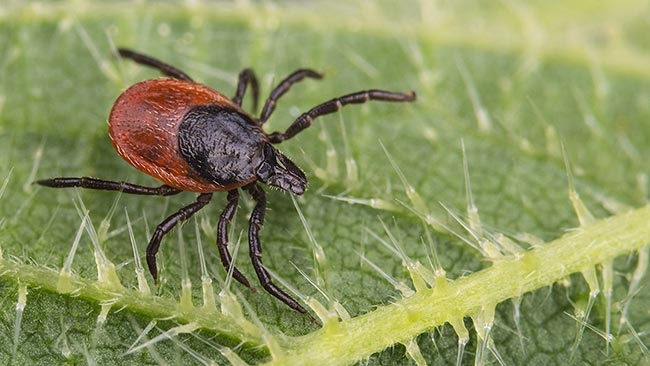
The most common flea present in animals in the UK is the cat flea (C felis). Preventive care of the flea has changed over the years. With the evolution of effective heating systems in houses and climate change, this problem is not a seasonal issue; it is prevalent all year round. This is why it is important owners must practise and continue effective prophylaxis all year round (Coles and Dryden, 2014).
The veterinary nurse must discuss and support the owner to understand how to treat all elements of the life stage of the flea. This being the case, the veterinary nurse must understand the prevention methods, management and treatments available to combat the flea.
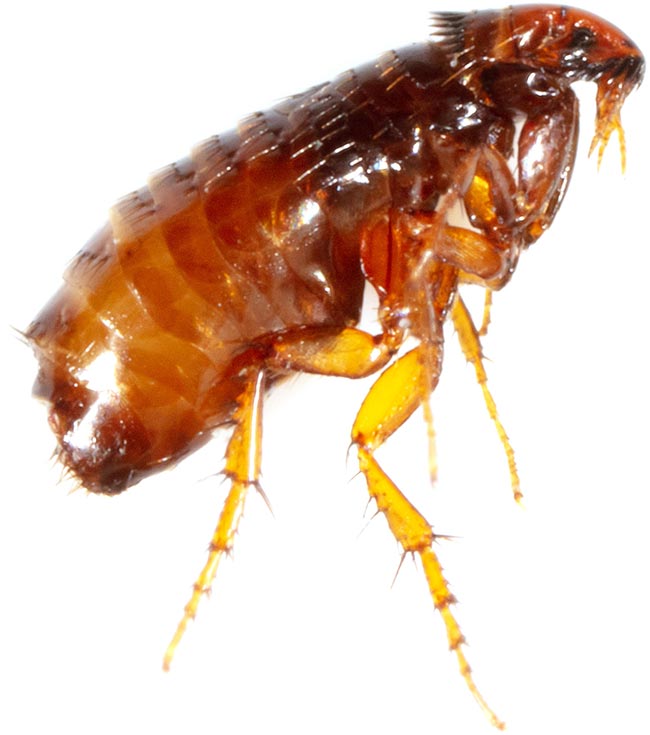
Clinical signs of fleas include:
Owners should be advised on the most appropriate method of administering the flea treatment as discussed with the owner. Two key methods of administering topical or oral administration exist.
Treatment is best with the use of an adulticide. With this treatment adult fleas are usually killed within 24 to 48 hours. However, this is not effective without concurrent treatment in the environment.
For effective flea treatment and control, the owner must be advised to treat the house with insecticides and insect growth regulators (Richmond, 2017).
Along with the treatment of the environment and the animal, the veterinary nurse must ensure owners clean any bedding and treat any furniture the animal may go on. Washable fabrics, such as dog bedding, should be washed above 60°C, and the owner must also vacuum regularly and dispose of the matter immediately (Richmond et al, 2017). If the owner has carpet on the floor, a carpet brush should also be used to remove any pet hair prior to treatment.
The biggest problem with flea treatment and control is ensuring owners understand the importance of keeping the treatment regular. Fleas can be carried into homes from different environments in shoe treads, which is why one must keep environmental control as part of the prevention regime.
Owners must also be aware of the risks of their pets being exposed to fleas when visiting other people’s homes or within the holiday environment. They may consider taking preventive environmental treatment with them when using different holiday accommodations and ensure that the prophylactic treatment they use is in place before they leave.
Some animals are allergic to flea bites – most commonly the saliva – and this can cause some severe pyoderma and intense itching of the animal. This is commonly known as flea allergic dermatitis. Clients should be advised that if this happens, the animal may need to come into the practice for additional treatment to reduce any swelling and itching.
In extreme infestations, in young or immunocompromised pets, the animal may be at risk of flea-induced anaemia. Some fleas may also be attracted to the owner, so in some extreme infestations, owners may start to show evidence of flea bites. Again, they should be advised to seek medical advice.
For owners with rabbits that free-run in the garden, owners should consider the reduction of exposure to wild rabbits, as myxomatosis can be spread by flea bites. They should also be advised about the importance of vaccinating against this deadly disease (Buckoke, 2012).
Owners may want to bathe their animals if they have significant infestations. The veterinary nurse should discuss suitable shampoos and methods for bathing. Owners must be made aware that bathing should not be done for a period of time after treatment provision, according to manufacture instructions.
Unfortunately, due to climate change and milder weather, ticks are a risk to pets in the UK most of the year. Ticks now feed throughout the year, and with the feeding comes vector-borne risks to pets (Smith et al, 2011). The veterinary nurse must discuss the possible risks to the pet from the feeding process of the tick, ensuring owners understand the importance of checking their pet.
Ticks are known to be present in most of the UK – especially in areas with long grass, deer or ruminant animals and bracken (Richmond, 2017).
Ticks are known to cause Lyme disease (Borrelia), but with the increase of other tick-borne diseases, such as Anaplasma and Babesia species, it is important to stress the need for tick prevention.
It may be that the owner is visiting or planning a visit to the coast or the countryside; therefore, it may prove beneficial to have a geographical map that indicates the prevalence of ticks in the UK.
On discussion with the owner, the most appropriate treatment method can be advised. It may be the owner is better to have a combined spot-on. Some combination treatments are classified as POM-V, and a VN will need to discuss the treatment and get authorisation from a veterinary surgeon for the prescription.
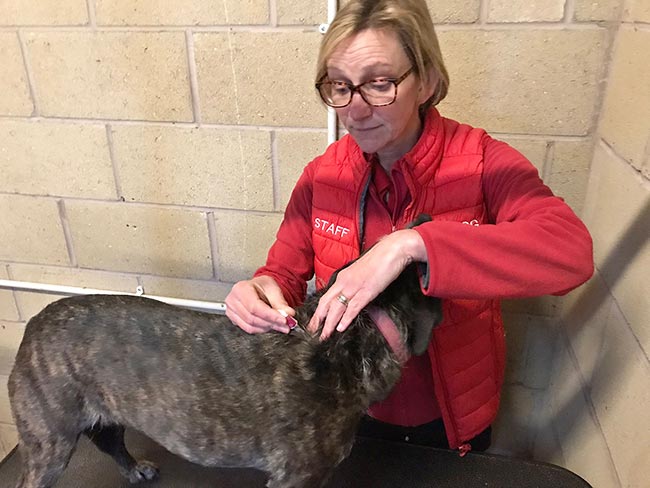
One must ensure that clients understand, as with fleas, that prophylactic treatment requires concordance and following the sequential treatments to keep an effective regime.
Owners must be advised to check their animals after exercising to look for any signs of ticks, as they should be removed as soon as possible. If the animal does get a tick, the veterinary nurse must provide key guidance on safe removal.
When demonstrating the removal of the tick to the owner, one method can be used with a tick hook using a twist and pull action (Richmond et al, 2017).
Veterinary nurses may consider an alternative action using a pair of blunt forceps with a gentle direct pulling technique (Elsheikha, 2017a). It must be made clear to owners that if the tick is removed incorrectly, mouthparts may be left in the animal’s skin and, as a result, could cause an infection. If they have removed the tick incorrectly, they will need to be advised to seek veterinary attention and other treatment may need to be provided.
Owners must also be made aware of the risk of zoonotic diseases from ticks and the risk of ticks to themselves.
Clinical signs of nematodes include:
The most common roundworms seen in puppies and kittens are:
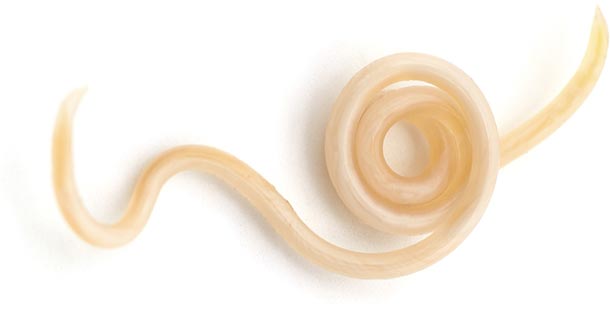
Puppies may be born with an infestation of roundworms, as they can be transmitted by vertical transmission via the placenta. For these reasons, it is recommended the bitch be treated with appropriate treatment; currently recommended are macrocyclic lactones on the 40th and 55th day of pregnancy, or fenbendazole daily from the 40th day of pregnancy, continuing to two days postpartum (European Scientific Counsel Companion Animal Parasites [ESCCAP], 2021).
Puppies can then be treated with anthelmintic from three weeks of age, every two weeks, and this is done until two weeks after weaning. This is then continued monthly until six months of age.
Kittens are slightly different in terms of the risk of infection and treatment requirements as they do not get nematodes via vertical transmission (ESCCAP, 2021). It is recommended that treatment is started at three weeks old and repeated fortnightly until two weeks after weaning. Then monthly until six months (ESCAAP, 2021).
Owners must be aware of the zoonotic risk from nematodes, and veterinary nurses must provide guidance for disposal of excrement and on the importance of hygiene. Prophylactic treatment for nematodes should be stressed to clients and should be completed sequentially to ensure an effective regime is kept.
Discussion exists around the use of worm egg counts to diagnose worm burden for treatment protocols, although it is thought to be more effective to give the animals regular treatment (ESCCAP, 2021).
Depending on the treatment regime chosen, the owner may choose a spot-on or tablet combined with flea and tick treatment. Monthly treatment may be recommended, as it reduces egg shedding by more than 90 per cent, and is recommended for cats that scavenge and people who are immunocompromised (Richmond, 2017).
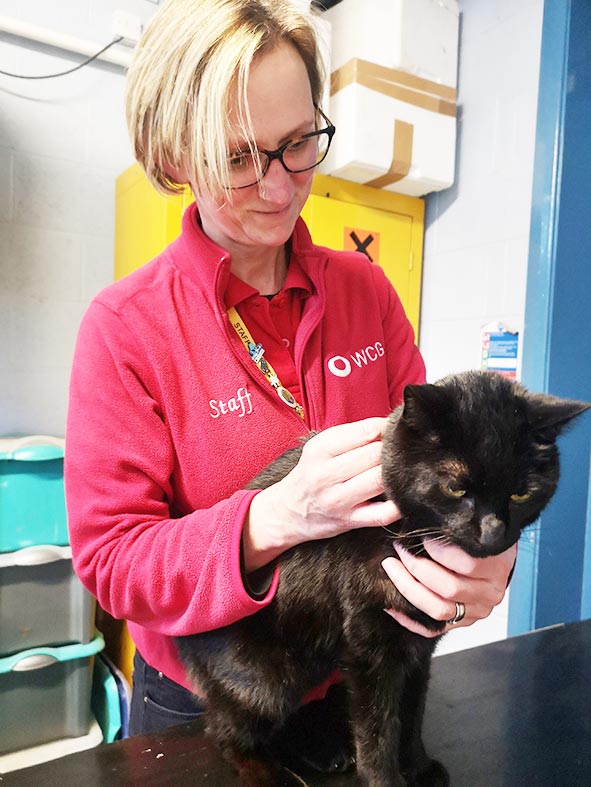
As a guidance source for clients, consider the requirements and lifestyle of owners and their animals to provide the most suitable treatment.
It is extremely important that the owner is advised about the risk of lungworm A vasorum. It was thought previously that lungworm was located in certain geographical locations in the UK, although newer information points that it is now across the whole of the UK.
Many factors could have caused this, such as animals moving around the UK on staycations (Vets Now, 2022). Owners should be advised to try to stop their dogs from eating any slugs or snails in the garden, although they can also be exposed to this via puddles, stale water or eating grass. Lungworm should be considered as part of the worming requirements for owners, as not all worming treatments cover lungworm.
Clinical signs of tapeworms include:
The most common tapeworms in the UK are E granulosus, Taenia species and D caninum.
Owners need to be advised about the importance of the treatment requirements for tapeworm. They must understand geographical location may expose their pet to specific tapeworms. Pets living in Herefordshire, mid-Wales and the Western Isles are at an increased risk of E granulosus (Richmond, 2017), for example. Consideration should also be given to the zoonotic risk to the owner.
Consideration also needs to be given to the diet fed to a pet. If a raw diet is fed, this will increase the risk of exposure to tapeworm. Consideration must also be given to the flea control that is in place, as the flea is the intermediate host for D caninum.
For dogs with a high risk of infection with Echinococcus species, it is recommended monthly treatments with an appropriate anthelmintic containing praziquantel or epsiprantel should be given (ESCCAP, 2021).
When considering other treatment methods, it may be the owner wants to have one treatment that covers all via a spot-on or tablet. Consideration and discussion should be had with owners, ensuring they understand the treatment choice and will follow the set regime.
The veterinary practice may want to provide an informative noticeboard detailing the importance of endoparasite and ectoparasite prevention. It may be best to change this with the seasons and the changing parasite risks.
As veterinary nurses, good communication must be had with the client; one must listen and ensure all of an owner’s ideas are considered. Veterinary nurses may choose to run nursing clinics, such as a parasite clinic, as this would encourage owners to follow prophylactic veterinary treatment.